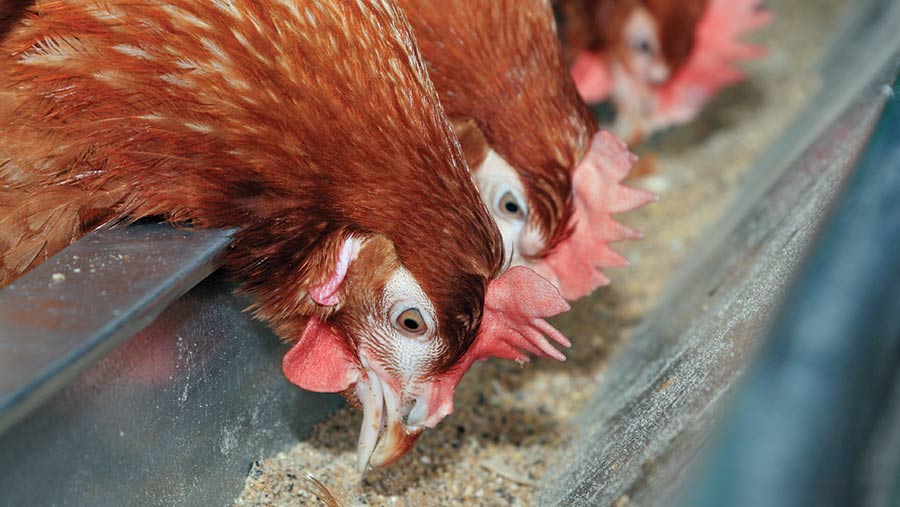Fewer eggs a hen: The cost of contaminated feed
 Press pic
Press pic When egg numbers drop on layer units, bird health and feed quality are immediately under the spotlight.
Now, long-running research is highlighting the challenge posed by batch variation in microbiological contamination of feeds, leading to enteritis and reducing lifetime laying performance.
“Enteritis, particularly when experienced prior to onset of lay, can disadvantage a bird and challenge flock uniformity,” explains poultry veterinarian Gino Lorenzoni.
“Egg producers, in general, focus on the levels and impact of mycotoxins and anti-nutritional factors in feed, knowing they affect a layer’s performance.
See also: Feed safety is crucial for poultry producer
“But, until now, the microbiological quality of mash, and the variation between batches, hasn’t been given the same focus.”
Dr Lorenzoni points to the variability in microbiological levels in feed as a contributory stress factor.
“We know that healthy birds often cope with relatively high levels of bacterial challenge in certain circumstances, especially when few other stressors are challenging the birds at the same time.
“However, when high levels of bacteria in feed combine with other debilitating factors, enteritis may develop and its impact can cause temporary breaks in laying.
“Commonly, producers see a drop in egg numbers linked to a batch of poor quality feed, with birds quickly returning to normal production once a new batch of feed is introduced. Avoiding that blip, and saving those lost eggs, is our goal.”
Research conducted at North Carolina State University underlines the point. In a 66-week programme, the researchers concluded that a single stressful event related to poor-quality feed can cost 1.1 egg per hen.
That equates to over £2,000 in lost revenue in a flock of 24,000 free-range birds – or £88,000 in a million-strong colony flock.
Analysis
Dr Lorenzoni is technical director at Anitox – a global provider of pathogen controls to the feed sector.
For the past five years the company has collected and analysed almost 20,000 feed and raw materials samples prior to treatment with its proprietary pathogen control solution.
The data collated offers a comprehensive picture of the level and variability of enterobacteriaceae in feed and raw material by type and sources, at different times of year and across the world.
“Looking at our European samples, we see an average of some 80,000 enterobacteriaceae per gram (cfu/g) of feed. The top 25% most contaminated samples average 320,000cfu/g, with the top 10% averaging well above 700,000cfu/g.
“That’s a huge variation, and represents a significant challenge if those feeds were fed untreated.
“Seasonality, origin and storage of the raw material can have a profound impact on its microbiological quality.
“Given that most layers consume mash feed, the only effective means to ensure uniformity at point of consumption is to treat feed with a pathogen control solution that offers residual protection.”
